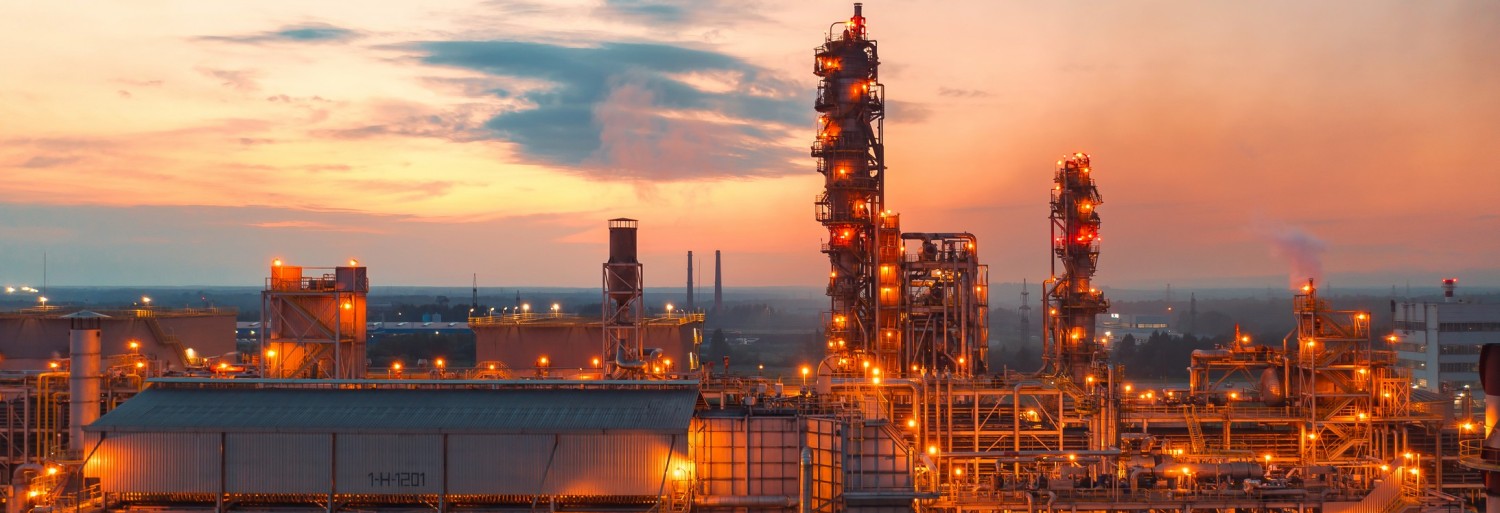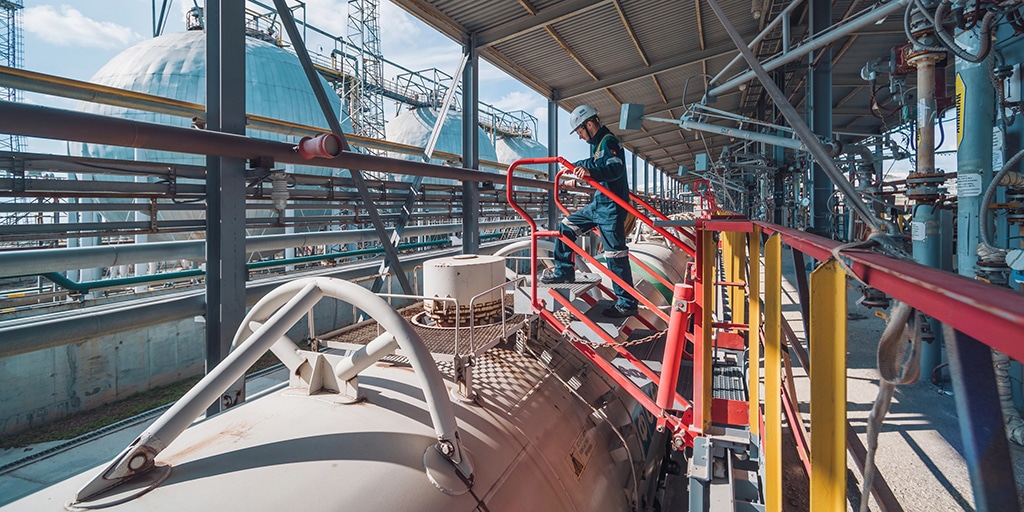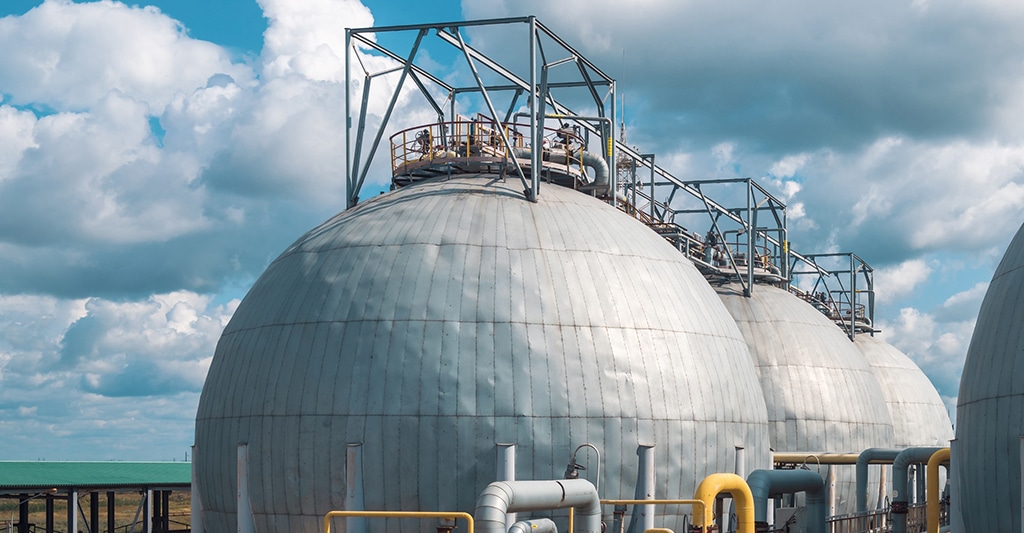Strategy
In 2024, PhosAgro continued to be guided by the Strategy to 2025 approved by the Company’s Board of Directors in March 2019. Most of the strategic goals remained relevant in the reporting year, with several key targets for 2025 achieved ahead of schedule.
In the reporting year, the Company’s management presented proposals to the Board of Directors with respect to PhosAgro Group’s Development Strategy to 2030, including key targets and main avenues for growth. The draft Strategy is expected to be submitted to the Board of Directors for review in 2Q 2025, with the new Strategy to 2030 to be approved by the end of the year.
The Strategy to 2025 deeply integrates sustainability principles across all its initiatives
Health and safety goals
Zero workplace incidents and injuries
Environmental and climate goals
Reduced emissions and water use, increased waste recycling
Corporate social responsibility goals
Contribution to the UN Sustainable Development Goals
Increasing sales efficiency
- Expansion of the foothold in the priority domestic market and premium markets
- Higher share of premium fertilizer brands in the sales mix
Boosting logistics efficiency
- Alignment of production and sales
- Reduction of per unit transportation costs
- Development of port infrastructure
Operational efficiency and production growth
- Capacity expansion
- Higher self‑sufficiency in feedstock
- Stronger operational efficiency
Progress against the Strategy to 2025 goals in 2024
Expansion of the foothold in premium markets (own products: mineral fertilizers and feed‑grade MCP)
Higher share of premium fertilizer brands (own products: mineral fertilizers and feed‑grade MCP)
Reduction of transportation costs
- Increased reliance on corporate rolling stock
- Use of innovative railcar fleet
Alignment of production and sales
Development of port infrastructure
Capacity expansion
Maintaining high feedstock self‑efficiency
Stronger operating efficiency
Reduced emissions
Status 2024
Reduced impact on water bodies
Reduced waste generation
Status 2024

Reduced Scope 1 GHG emissions

Fostering a safety culture and adhering to the highest occupational health and safety standards

Employee satisfaction

Increasing sales efficiency
The strategic sales goals of PhosAgro Group include expanding its foothold in premium markets and increasing the share of premium product sales.
The Group is successfully pursuing these goals in the evolving market landscape both by actively engaging in high‑margin markets and by developing and promoting new, primarily complex grades of mineral fertilizers.
These goals are interrelated, as different geographical markets have historically shown a preference for specific fertilizer grades. For instance, in South America, one of our key regions, there is a strong focus on dual fertilizer grades which enable farmers to create individual blends tailored to their crops, soils, climate, and other agricultural factors. Conversely, in Russia, the Company’s primary market, consumers have historically preferred compound and complex fertilizer grades that are ready for application and do not require blending.
In line with this strategy, there was a significant increase in shipments to both the Russian and Brazilian markets during the reporting year, which largely drove accelerated growth in the sales of complex and compound fertilizer grades.
Expanding the foothold in premium markets
We remain strategically committed to our home market, the core one, which translated into a 9.6% increase in domestic sales during the reporting year, and a 10.6% increase if the CIS market is included. In 2024, this increase was the main driver behind the 4.2% rise in total fertilizer sales, including feed phosphates.
| 2022 (actual) | 2023 (actual) | 2024 (actual) | 2024 (actual) / 2023 (actual), % | Strategy to 2025 | |
|---|---|---|---|---|---|
| Distribution centres | 33 | 34 | 37 | 8.8 | 35 |
| Total storage capacity, kt | 821 | 868 | 1,000 | 15.2 | >650 |
| Liquid complex fertilizer storage capacity, kt | 74 | 85 | 101 | 8.8 | 62 |
From 2018 to 2024, the Company invested RUB 5.4 bln in developing PhosAgro‑Region, its own distribution network operating in Russia and across the CIS. By early 2025, the number of the network’s distribution centres reached 37, while the total storage capacity came in at 1 mt, including 101 kt for the transhipment of liquid mineral fertilizers (a new record for the country). Since the launch of the strategic initiatives, the storage capacity for this type of fertilizers has increased ninefold. In 2025, PhosAgro Group will focus on further expanding its distribution network, upgrading the logistics infrastructure, and launching new logistics centres in Russia’s key agricultural regions.
In 2024, as part of its service model development, the Company continued to offer Russian farmers the service of chemical soil analysis. During the year, our agronomic experts surveyed more than 100,000 ha, marking an almost twofold increase compared to the previous year. Since the launch of the initiative, we have surveyed nearly 200,000 ha across 31 regions in six federal districts. In 2025, the Company plans to further enhance its service business by offering Russian farmers an expanded set of agronomic and process solutions to improve agricultural productivity.
In 2024, we continued to actively develop new business areas – the supply of crop protection products and seeds of Russian breeders. Thus, the Company’s customers gained access to a comprehensive service, including agrochemical analysis, hybrid selection, development of plant nutrition and protection systems, product supply, and additional services. Notably, in the very first year, sales of domestically bred seeds reached 35,000 seed units.
Higher share of premium fertilizer brands in the sales mix
In the reporting year, the market witnessed accelerated growth in the sales of complex triple fertilizers, with their share in the Company’s product portfolio rising to 33.3% in 2024 due to strong demand in the key domestic market. The flexibility of our production assets enables us to respond swiftly to changes in the market demand while maintaining full capacity utilisation.
| 2022 (actual) | 2023 (actual) | 2024 (actual) | 2024 (actual) / 2023 (actual), % | Strategy to 2025 | |
|---|---|---|---|---|---|
| Urea/AN/AS | 2,551 | 2,561 | 2,500 | –2.4 | 2,515 |
| MCP | 350 | 377 | 399 | 6.0 | 472 |
| APP | 112 | 198 | 187 | –5.4 | 213 |
| NPK/PK/PKS | 3,670 | 3,500 | 3,859 | 10.2 | 4,980 |
| MAP/DAP | 4,272 | 4,504 | 4,660 | 3.5 | 3,270 |
| Total | 10,954 | 11,139 | 11,604 | 4.2 | 11,450 |
| Share of complex fertilizers, % | 33.5 | 31.4 | 33.3 | 43.4 |
The Company continues to develop and actively market new fertilizer grades in an effort to meet the existing and potential needs of farmers in Russia and abroad to the fullest extent possible, while taking into account the specifics of crops, soil types, and farming conditions.
PhosAgro Group is actively developing the following premium products:
- fertilizers with micronutrients are considered one of the most potent ways to combat malnutrition and reduce nutrient deficiencies, as the micronutrients can be accumulated by plants and thus benefit the human diet;
- biological and biomineral fertilizers are expected to become one of the most effective solutions to ensure global food security by boosting agrochemical efficiency of plant nutrition systems without damaging the ecosystem.
Boosting logistics efficiency
The most part of the Company’s freight (ca. 99%) is transported via the Russian Railways network. In 2024, freight turnover totalled 30.5 mt, up 1.0% against 2023, with further growth to 31.0 mt expected in 2025.
Rail shipments are also a focus area of key initiatives aimed at improving the reliability of product deliveries and reducing transportation costs. Ensuring a secure supply is a top priority for us.
Reduction of transportation costs
As part of implementing the Strategy to 2025, we have significantly increased reliance on our own rolling stock, buying mostly innovative railcars with a higher capacity and longer run life. Increased reliance on PhosAgro’s own rolling stock means:
- enhanced safety of operation and more reliable supplies, as PhosAgro Group’s production and logistics processes are less dependent on third‑party services;
- higher cost efficiency, as corporate railcars are cheaper in use than third‑party rolling stock;
- a positive environmental effect, as the use of innovative rolling stock with higher cargo tonnage per railcar and train reduces the negative impact on the environment per tonne of cargo.
Other areas of focus to ensure transportation security and optimise transportation costs in 2024 included:
- developing mutually beneficial terms and entering into agreements with Russian Railways to co‑finance the development of transport infrastructure at railway stations adjacent to the Company’s production sites (Volkhov branch – final stage);
- securing tariff preferences for the shipment of liquid sulphur and sulphuric acid;
- verifying the possibility of receiving subsidies for export transportation of industrial products by rail in the period from 2022 to 2024 according to Decree of the Government of Russia No. 1347 On State Support of Russian Industrial Organisations in Order to Compensate Expenses for Transportation of Industrial Products dated 28 July 2022.
Alignment of production and sales
Corporate rail infrastructure throughput capacity at the Company’s key production facilities is critical to efficient transportation. Thanks to our comprehensive investment programmes in the 2019–2025 strategic cycle, we have been able to expand the throughput capacity of our key production facilities’ railway infrastructure to or above target levels.
In 2022, the Company launched a rolling stock renewal programme to 2034. As part of the programme, we plan to procure 392 ore dump cars and 11 electric locomotives for the Kirovsk branch, as well as 23 shunting locomotives for the Cherepovets facility and the Balakovo branch.
In 2024, we purchased three shunting locomotives, two electric locomotives, and 29 dump cars.
The construction of a container yard and the installation of the required equipment at the phosphate facility in Cherepovets are underway, which will allow for a significant increase in future container shipments. As part of a four‑party agreement between Apatit, Severstal, Russian Railways and Lengiprotrans, we are modelling the operation of Cherepovets railway hub, with a list of measures to be drawn up to handle both current and future freight turnover. These two projects are expected to be completed in 2025.
In 2024, as part of a comprehensive Volkhov branch development project, we ramped up infrastructure throughput at the Volkhov site to boost freight turnover. Under the second stage of the project, we reached an agreement with Russian Railways to co‑finance the construction of public infrastructure.
We continued to work on a project for expanding the transport infrastructure at the Balakovo branch to support an increase in finished product shipments and acceptance of new raw materials – potassium chloride and ammonium sulphate.
| Freight turnover of chemical facilities’ railway infrastructure | 2022 (actual) | 2023 (actual) | 2024 (actual) | Strategy to 2025 |
|---|---|---|---|---|
| Cherepovets site | 15.4 | 15.3 | 16.1 | 16.5 |
| Balakovo branch | 6.7 | 7.2 | 6.9 | 8.0 |
| Volkhov branch | 3.8 | 4.0 | 4.5 | 3.8 |
| Total | 25.9 | 26.5 | 27.5 | 28.3 |
Development of port infrastructure
In addition to developing logistics and sales infrastructure across Russia, we are working to increase the reliability and efficiency of our exports by both reducing transshipment costs and providing state‑of‑the‑art transshipment capacities.
Our strategic aim is to develop and maintain a balanced port sales infrastructure in terms of costs and reliability, capable of handling at least 8 mtpa of fertilizer exports. The Company has already exceeded its target transshipment capacity. Given our plans to expand production capacities, the work is underway to consider the measures that would increase the available transshipment capacity to 10 mtpa.
The ports key to PhosAgro Group’s operations are located in the North‑West of Russia. These include European Sulphur Terminal, Petrolesport, First Container Terminal, and St Petersburg Port in the Leningrad region and St Petersburg, and Murmansk Bulk Terminal in Murmansk. The Company also uses a terminal at the Hamina Kotka port in Finland. We rely on specialised terminals and their equipment designed to mitigate the environmental impact.
Operational efficiency and production growth
Capacity expansion
The long‑term growth in demand for mineral fertilizers has been steady. In order to respond to stronger demand, PhosAgro focuses on expanding capacities to produce its key products, which is one of our key strategic goals for 2025.
| 2022 (actual) | 2023 (actual) | 2024 (plan) | 2024 (actual) | Strategy to 2025 | |
|---|---|---|---|---|---|
| Production of nitrogen‑based fertilizers | 2.5 | 2.6 | 2.5 | 2.6 | 2.5 |
| Production of phosphate fertilizers and feed‑grade MCP | 8.2 | 8.4 | 8.7 | 8.9 | 8.9 |
| Production of phosphate rock | 10.9 | 10.7 | 11.1 | 11.4 | 11.1 |
| In‑house processing of phosphate rock | 8.7 | 9.1 | 9.3 | 9.5 | 8.4 |
Implementation of high‑priority projects
Project schedule
2023–2024
Targets
Status
In September 2024, we completed the installation of new belt filters in sections 5.55/5.58, with the filters commissioned on schedule. We also completed the assembly of the new VEI‑64, with the installation reaching its design capacity. At section 5.58, the absorption system was upgraded during the section’s shutdown for an overhaul. As a result of this project, WPA‑2 and WPA‑3 reached the target phosphate rock production capacity of 141 tonnes per hour.
Project schedule
2023–2024
Targets
Status
In October 2024, we completed the upgrade of a phosphoric acid production plant (WPAP‑450), achieving the target phosphate rock production capacity of 185 tonnes per hour.
Project schedule
2021–2024
Targets
Status
As part of the project, we completed the technical upgrade of the mineral salts unit, with new, more powerful equipment installed. In July 2024, the unit achieved its target capacity.
Project schedule
2024–2025
Targets
Status
In 2024, we commenced the project, with key equipment contracted for the main activities. In 2025, we plan to upgrade VEI‑1 and VEI‑5, replacing heating chambers and axial pumps with more powerfulunits. Additionally, there are plans to replace the buckets of carousel vacuum filter No. 3 with new reinforced ones and to substitute the N120AS and N220AS circulators with their upgraded versions.
Maintaining high feedstock self‑sufficiency
Feedstock self‑sufficiency
Strong vertical integration is PhosAgro’s major competitive advantage. With our phosphate rock reserves covering 100% of the Company’s needs for raw materials required for phosphate mineral fertilizers, we are ramping up the production of other key types of feedstock, thus increasing our feedstock security and cutting costs.
| 2022 (actual) | 2023 (actual) | 2024 (plan) | 2024 (actual) | 2025 (plan) | Strategy to 2025 | |
|---|---|---|---|---|---|---|
| Ammonia, % | 76.0 | 75.0 | 74.0 | 74.0 | 71.4 | 76.0 |
| • Production, mt | 2.0 | 2.0 | 2.0 | 2.0 | 2.0 | 1.9 |
| • Consumption, mt | 2.6 | 2.6 | 2.7 | 2.7 | 2.8 | 2.5 |
| Sulphuric acid, % | 92.0 | 92.0 | 95.0 | 93.4 | 97.0 | 91.0 |
| • Production, mt | 7.9 | 8.1 | 8.7 | 8.5 | 9.4 | 7.8 |
| • Consumption, mt | 8.6 | 8.8 | 9.1 | 9.1 | 9.7 | 8.6 |
| Ammonium sulphate, % | 51.0 | 46.0 | 49.0 | 37.0 | 57.0 | 75.0 |
| • Production, mt | 0.3 | 0.3 | 0.3 | 0.2 | 0.3 | 0.7 |
| • Consumption, mt | 0.6 | 0.6 | 0.6 | 0.5 | 0.5 | 0.9 |
Implementation of high‑priority projects
Project schedule
2021–2024
Targets
Status
In March 2024, the system reached its target capacity of 135 tonnes per hour.

Project schedule
2024–2025
Targets
Status
Procurement of materials and equipment is in progress, with contractors selected for key types of work. Earthworks and foundation dismantling, as well as installation of metal structures and core equipment are ongoing.

Capital investments
Progress against 2025 strategic goals of capacity expansion and feedstock self‑sufficiency comes on the back of effective planning and the successful implementation of the Company’s investment programme.
Minimum project IRR: approved discount rate +2% (at least 15%)
Annual CAPEX budget of up to 50% of EBITDA
More efficient working capital management
| 2022 (actual) | 2023 (actual) | 2024 (plan) | 2024 (actual) | |
|---|---|---|---|---|
| Investment projects | 24.1 | 18.8 | 25.6 | 26.5 |
| Maintenance | 27.0 | 31.3 | 34.5 | 33.9 |
| Non‑industrial construction | 2.2 | 3.3 | 2.8 | 2.5 |
| Total excluding capitalised repairs | 53.2 | 53.4 | 62.9 | 62.9 |
| Total including capitalised repairs | 63.0 | 64.2 | 75.2 | 75.2 |
| 2022 (actual) | 2023 (actual) | 2024 (actual) | |
|---|---|---|---|
| CAPEX, RUB bln | 53.2 | 53.4 | 62.9 |
| Adjusted EBITDA, RUB bln | 266.9 | 168.4 | 170.6 |
| CAPEX / adjusted EBITDA, % | 20 | 32 | 37 |
| Phase 3 of developing the Balakovo branch of Apatit (implementing a flexible MAP, DAP, NPK, and NPS production scheme) | 8.4 |
| Stripping and mine development at the Rasvumchorr Plateau (Kirovsk) | 4.3 |
| Ramp‑up of phosphate rock processing at the dihydrate process WPA production facilities (WPA‑2 and WPA‑3) (Cherepovets) | 3.4 |
| Development of the +10 m level at the Kirovsky mine (Kirovsk) | 2.5 |
| Development of the Vostochny mine, a block pillar under the Saami pit, and the Gakman block, and development of ANBP‑3 plant (Kirovsk) | 2.5 |
| Ramp‑up of phosphate rock processing (Volkhov) | 1.6 |
| Construction of a phosphogypsum conversion unit (Balakovo) | 1.3 |
| Other investment projects | 2.5 |
| Total for investment projects | 26.5 |
Operating efficiency improvements
At PhosAgro, we are implementing a whole range of projects and initiatives to improve our technologies and organisational approaches and streamline production processes.
Production site
Cherepovets, Kirovsk, Balakovo, Volkhov
Project schedule
January–December 2024
Key project initiatives
- Higher volumes of phosphate rock processing and MAP production
- Reduction in end‑to‑end phosphate rock losses
- Improvement in phosphate rock recovery rates
In the reporting year, the Group’s entities successfully implemented Russian software, including as part of import substitution efforts:
Production site
All production sites
Project schedule
October 2023– November 2024
With the project proving to be a success, the Company’s business analysts and IT experts have started exploring the scalability of AI‑based speech recognition and generation technologies to other business processes of PhosAgro Group.
Key project initiatives
- Introduction of a voice data input solution for registering the processes and results of technical and commercial rolling stock inspections
- Standardisation and expansion of recorded rolling stock failure parameters
2024 highlights
A more than fivefold reduction in the time required to transmit and process technical inspection data
Creation of a statistical rolling stock failure database for predicting changes in the technical condition of rolling stock by using AI technologies
Introduction of a manufacturing execution system (automated enterprise management system) for a major holding company in the chemical sector, the first implementation of Russian‑made software of this kind in the industry.
The project was included in the list of high‑priority projects under the IT import substitution programme of the Russian Government and co‑funded by the state.
Production site
Cherepovets chemical facilities of Apatit
Project schedule
December 2022 – February 2025
The project ensured continuity in production processes through the use of Russian application software. Its success enables us to further enhance capabilities and roll the solution out to other facilities of the Company.
Key project initiatives
- Import substitution of foreign software for managing and controlling production processes: replacement of PI System by AVEVA (the company exited the Russian market) with the domestic ZIIoT Platform from Tsifra Group
2024 highlights
Successful implementation of the software with a warranty and technical support
S172 statement
According to Section 172 “Duty to promote the success of the company” of the UK Companies Act 2006, PhosAgro’s Board of Directors acts in good faith for the benefit of the Company to promote its success, taking into account possible long‑term consequences of its decisions for the society and the environment, as well as the interests of the Company’s employees and other stakeholders.
For the members of PhosAgro’s Board of Directors, these standards mean that the Company’s stakeholders should be interacted with responsibly and that their interests should be respected to the maximum extent possible.
At least once a year, the Strategy and Sustainable Development Committee (until 2022, the Sustainable Development Committee) of the Board of Directors reviews feedback from stakeholders on aspects of the Company’s operations that are material to them.
Such feedback is used to identify topics and indicators to be disclosed in PhosAgro’s non‑financial reporting and to determine interaction priorities and mechanisms for engagement with the Company’s stakeholders, including at the Board level.
In the reporting year, the Board of Directors continued to hold on‑site meetings at the Company’s production facilities. These meetings help the Board reach a completely new level in engaging with the whole range of stakeholders, including regional and municipal governments, key management of PhosAgro’s subsidiaries, production teams, and local communities. In 2024, the meetings were held at the Cherepovets and Kirovsk production sites. The Board members explored the industrial assets, held meetings with key employees, and visited social facilities.
On‑site meetings and other Board activities at the Company’s production facilities are a vital element of feedback collection, which helps the Board of Directors gain a thorough understanding of the Company’s economic, social, and environmental impact.
Furthermore, in February 2024 the Chairman of the Board of Directors acted as the head of PhosAgro’s delegation during meetings with the leadership of the UN Food and Agriculture Organisation (FAO) and the UN Educational, Scientific and Cultural Organisation (UNESCO). These are the two organisations with which the Company has been partnering for a long time to deliver a wide range of join projects.
Prospects
PhosAgro Group’s development scenarios are reviewed by the Board of Directors when approving its Strategy. The strategic planning cycle adopted by the Company is five years.
Since 2019, the Board of Directors has been considering a contingency plan to prepare for critical changes in the external operating environment such as possible restrictions on our supplies to key markets.
In 2024, countervailing duties and the export quota system remained in force. The restrictions caused by international sanctions and supply chain disruptions still made it difficult for the Company to deliver its products to its traditional markets. The expected introduction of additional tariffs on mineral fertilizers supplied to the EU in 2025 will present another challenge for PhosAgro Group, requiring that we adopt new management techniques, approaches, and solutions.
In 2024, similarly to the previous two years, the Company was adversely affected by the termination of operations in Russia by some Western suppliers of equipment, services, and technology, as well as by difficulties in making payments.
The Board of Directors weighed the associated strategic risks when approving the Strategy to 2025 and continues to review them semi‑annually as part of the strategy implementation monitoring. Each risk has a dedicated risk management map, containing a detailed description along with mitigants and probability, materiality and risk appetite estimates. All of the above parameters are updated on an annual basis.
Despite unprecedented materialisation of these risks, the Company continues to maintain uninterrupted operations across all its production sites, ensure timely supply of fertilizers, and support the well‑being of its employees and their families. PhosAgro Group’s team manages to address new challenges swiftly, maintaining business stability and advancing to new heights.
Based on the foregoing, the Board of Directors finds it reasonable to believe that the Company will, without any reservations, be able to continue its operations and meet all its obligations as they fall due both during the implementation of the Strategy to 2025 and through to 2030.
For more information on the Company’s strategic risks, see the Strategic Report section